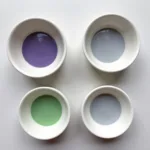Want to give your Bash prompt a vibrant makeover? Customizing your Bash prompt with different colors not only enhances its visual appeal but also improves readability and can even boost your productivity. This guide provides a comprehensive overview of how to highlight your Bash prompt with different color schemes, from simple changes to complex customizations.
Understanding the Basics of Bash Prompt Customization
Before diving into the colorful world of Bash prompt customization, it’s essential to understand the fundamental elements at play. Your Bash prompt is governed by the PS1 environment variable. This variable contains special escape sequences that control the prompt’s appearance, including color codes.
Simple Color Changes in Your Bash Prompt
Let’s start with some basic color modifications. You can easily add color to your prompt using escape sequences combined with color codes. The basic structure looks like this: [e[<color_code>m].
For instance, to make your prompt text red, you would use [e[31m]. To revert to the default color, use [e[0m]. You can incorporate these codes directly into your PS1 variable.
Here are a few common color codes:
- 30: Black
- 31: Red
- 32: Green
- 33: Yellow
- 34: Blue
- 35: Magenta
- 36: Cyan
- 37: White
You can also use bolder versions of these colors by adding a ‘1’ before the color code (e.g., [e[1;31m] for bold red).
Adding Background Colors to Your Bash Prompt
Not just the text, you can customize the background color of your Bash prompt as well. The process is similar to changing the text color but uses a different set of codes. Instead of the 3x series, use 4x, where x is the color code from the list above. For example, [e[42m] would set the background color to green.
Advanced Bash Prompt Customization with Variables
You can create more dynamic and informative prompts by incorporating special variables. For instance, u displays the current user, h displays the hostname, and w shows the current working directory. Combine these with color codes to create a highly personalized and informative prompt.
 Bash Prompt with Advanced Customization
Bash Prompt with Advanced Customization
Using a .bashrc File for Persistent Changes
Making these changes directly in the terminal only applies to your current session. For the changes to persist across sessions, you’ll need to add them to your .bashrc file. Open this file with your favorite text editor (like nano or vim) and add the PS1 variable assignment, such as PS1="[e[1;32m]u@h:[e[1;34m]w[e[0m]$ ".
How to Reset Your Bash Prompt
If you’ve made changes and want to revert to the default prompt, simply unset the PS1 variable using the command unset PS1. Alternatively, you can manually set it back to the default value by referring to your distribution’s documentation.
Conclusion
Customizing your Bash prompt with different colors is a simple yet powerful way to personalize your terminal experience and improve your workflow. By mastering the use of color codes, variables, and the .bashrc file, you can create a Bash prompt that is both visually appealing and highly informative. Remember to experiment with different combinations and find what works best for you. Now, go ahead and add a splash of color to your terminal!
FAQ
- What is the
PS1variable? ThePS1variable controls the appearance of your Bash prompt. - How do I make color changes permanent? Add your
PS1variable assignments to the.bashrcfile. - What are escape sequences? Escape sequences are special character combinations that control the terminal’s behavior, including color output.
- How do I reset my Bash prompt? Use the command
unset PS1or manually set it back to the default value. - Where can I find more information on Bash prompt customization? Refer to the Bash manual (
man bash) or search online for tutorials. - Can I use other characters besides the ones mentioned? Yes, there are many other special characters and escape sequences you can use for further customization.
- Are these color codes universal across all terminals? Generally yes, but some terminal emulators might have slight variations.
Common Scenarios and Questions
-
Scenario: You want a prompt that shows the current time.
- Solution: Include
tor@in yourPS1variable.
- Solution: Include
-
Scenario: Your prompt is too long and wraps to the next line.
- Solution: Shorten your
PS1variable or adjust your terminal window size.
- Solution: Shorten your
Further Reading
For more information, consider researching:
- Bash scripting tutorials
- Advanced Bash prompt customization techniques
- Color codes and escape sequences in terminals
Need assistance? Contact us at Phone Number: 0373298888, Email: [email protected] or visit us at 86 Cau Giay, Hanoi. Our customer service team is available 24/7.

